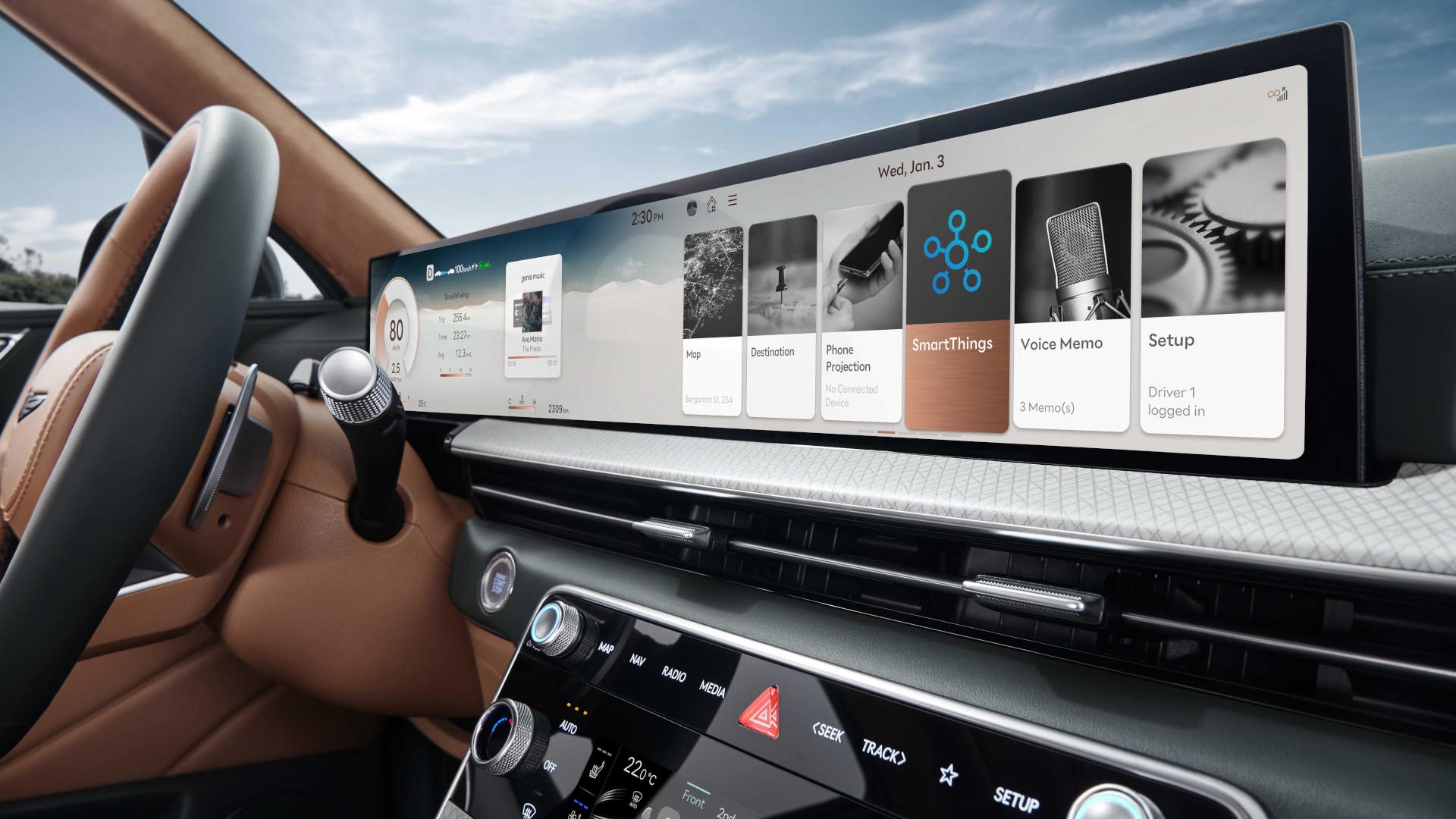Technology silos no longer fit into today’s platform economy. Whether for digital signage, automotive or smart homes. At CES 2024, Samsung is presenting a number of new features and cooperations for the SmartThings IoT platform. Tesla and Hyundai EV vehicles can now be controlled via SmartThings as easy as the smart home, household appliances and displays. There is no alternative to technology agnostic control for home as much as for sustainable digital signage concepts.
Connecting smart homes and cars is essential for humankind to manage the energy transition to NetZero. When it comes to optimizing energy consumption, closed technology silos are an obstacle. Samsung is cooperating with Hyundai, Kia and Tesla to connect Samsung’s SmartThings with connected cars. New energy management solutions like “home-to-car” and “car-to-home” connect previously separate technology worlds.
The “Home-to-Car” and “Car-to-Home” services connect the smart home with in-vehicle infotainment systems, thus enabling remote control in both directions. Through the SmartThings platform, users can perform a variety of actions around their car from home – starting it, controlling the smart air conditioning, opening and closing windows and checking the charging status. And it will also be possible to control household appliances such as televisions, air conditioners and chargers for electric vehicles from the car.

Digital signage and building controls also need to be connected
Vendor and technology agnostic IoT platforms are the way to more sustainability and comfort not only for smart homes, but also in the B2B business. In the future, building technology such as heating, cooling and lighting will also have to interact intelligently with digital signage and retail tech sensors. This is the only way businesses can intelligently reduce electricity consumption while providing the best possible customer experiences.
Just in time for the store opening, the air conditioning cools the store in coordination with powering up the LED walls on the sales floor to avoid extreme power peaks. In the evening, the building automation technology also turns off digital signage touchpoints. As the day progresses, the air conditioning, lighting and other building solutions are automatically adjusted to the visitor frequency of each room. Why isn’t the brightness of digital signage reduced when there are no customers nearby?
There are many interdependencies between HVAC (Heating, Ventilation, AC) and digital signage; intelligent platforms just need to control the individual technologies in a coordinated manner. Will the consumer solution Samsung SmartThings also be the platform for B2B? Why not – it wouldn’t be the first time that Samsung has introduced consumer features into the digital signage world.

